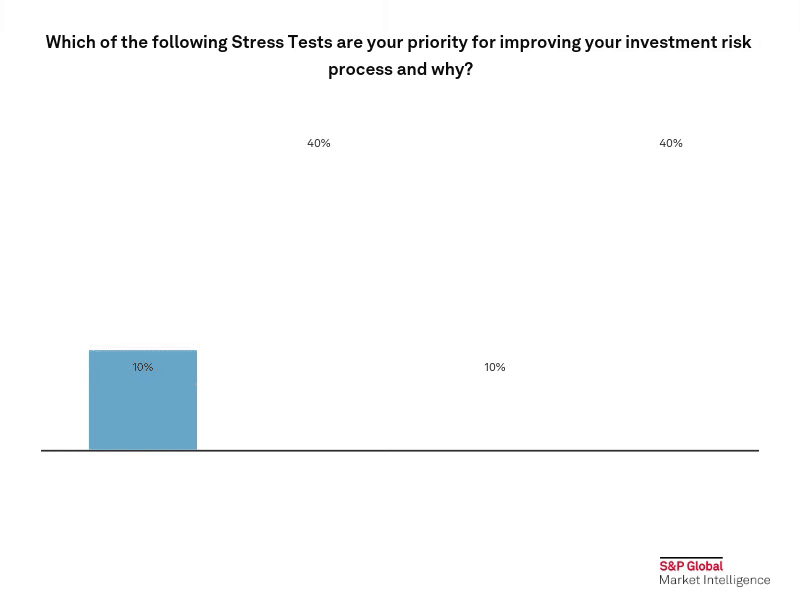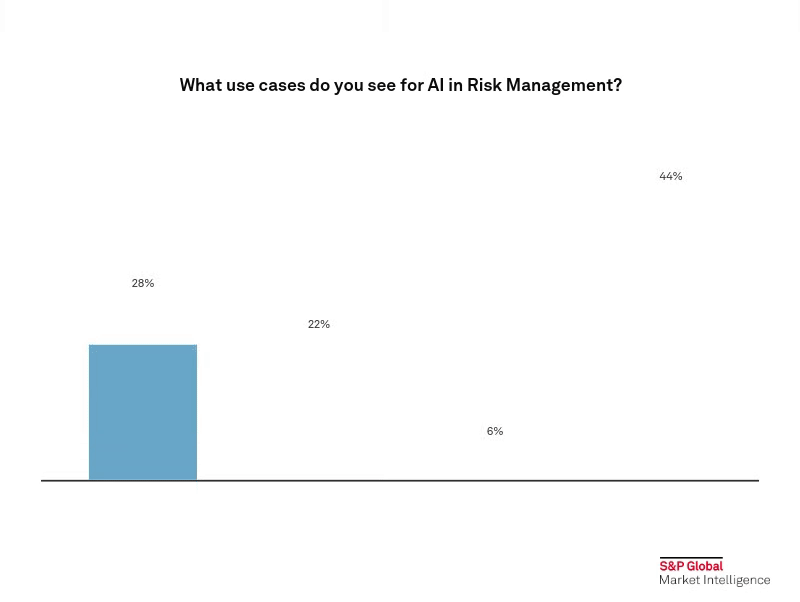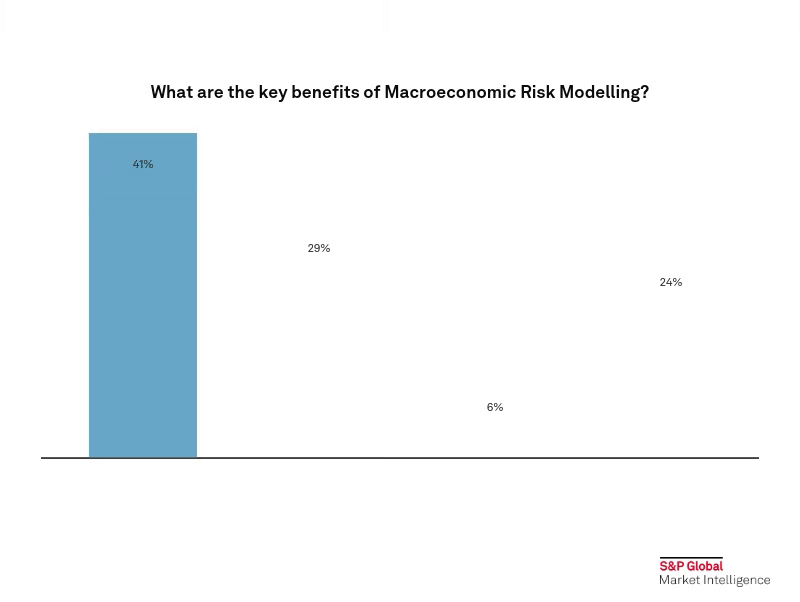S&P Global Offerings
Featured Topics
Featured Products
Events
S&P Global Offerings
Featured Topics
Featured Products
Events
S&P Global Offerings
Featured Topics
Featured Products
Events
Banking & Capital Markets
Economy & Finance
Energy Transition & Sustainability
Technology & Innovation
Podcasts & Newsletters
Banking & Capital Markets
Economy & Finance
Energy Transition & Sustainability
Technology & Innovation
Podcasts & Newsletters
S&P Global Offerings
Featured Topics
Featured Products
Events
Research — 22 May, 2024

By Luke Armstrong
Continuing our quest to uncover the art of risk management, we took our Roundtable Roadshow series to London to meet with senior professionals from leading Asset Management firms to unveil their expert perspectives and industry insights into how they are tackling today’s pressing issues.
The discussion was rich with insights, covering a range of topics:
Here are the highlights from this successful event.
World Class Risk Management
When asked which components contribute to a world class risk team 35% of our Roundtable participants felt having risk analysis and research that directly feeds into the investment process was the most important factor, suggesting that a strong connection between risk analysis and investment decisions is critical for a successful risk team.

The varying proximity to front office teams was another area that participants felt contributes to risk management effectiveness, with 29% of participants saying that a close integration to the 1st Line enhanced efficiencies. However, attendees also debated that independence from the front office can also be important as it can lead to unbiased risk assessments. The group discussed the balance between proximity and insight vs. distance and independence. We debated whether Risk teams should sit close to the Investment team, offering opinions throughout the process, or if they should be more separate in order to independently monitor and challenge the Investment team's decisions. A topic that is often discussed with clients, with some expressing a preference for being close to the Investment teams while maintaining independence. It was noted that reporting directly to the CIO adds an additional layer of complexity. However, there was a shared sentiment that if the Risk team continues to ask questions, they are effectively kept on the other side of the metaphorical wall.
Many participants agreed that integrating risk into the research process, rather than treating it as a separate function or cost center, makes sense. This involves regular discussions between the Risk team and Portfolio Managers to ensure that Investment teams are aware of and follow risk guidelines. The question arises whether risk should be a first-order function, focused on monitoring Investment team activities, or a second-order function, involving a deeper analysis and understanding of results. The answer may depend on the quality of research. In recent times, there has been a shift in perception, with Risk teams being increasingly seen as an integral part of the research process rather than a mere cost.
When asked by a Roundtable participant what S&P Global Market Intelligence for focusing on to offer a world class solution, I discussed our focus on providing customers with the ability to integrate different risks into one platform, such as climate risk, liquidity risk and market risk, all powered by S&P Global’s marketing leading data.
Stress Testing
Stress testing has always been an important part of risk management but in recent volatile times, having the ability to accurately estimate the P&L impact of upcoming events or forecasts has become even more important. When asked to prioritize which stress tests are most important for improving your risk process, the poll results were clear. Both the Predictive Inferred Market risk and the Liquidity Risk Stress Tests received 40% of the votes, making them the top choices. This suggests that respondents see value in utilizing predictive models to assess market risks and understanding the potential impact on investments. Additionally, the ability to generate liquidity stress tests was highlighted, as liquidity plays a crucial part during stress periods.

The Historical Market Risk stress tests and Climate Risk Scenario stress tests received 10% of the votes each, it is worth noting that they can still provide valuable insights into past market trends and the potential impact of climate-related risks on investments.
The participants immediately turned the discussion to the topic of liquidity, and their acknowledgement that liquidity is often overlooked until a crisis occurs, and liquidity evaporates. One guest expressed a philosophical perspective on liquidity analysis, stating that closing funds due to liquidity issues is a lose-lose situation. They emphasized the importance of not limiting or charging for fund withdrawals, but also noted that it may be in the best interest of investors to sell at a discount. The intertwined nature of liquidity and valuations was discussed, raising concerns about a potential death spiral. However, another participant argued that liquidity is constantly changing, especially for emerging asset classes, and risk management should continuously address this issue.
The conversation then shifted to the role of climate stress testing. While some felt that the asset management industry is not yet fully embracing climate considerations, others noted the increasing assets under management (AUM) in climate-friendly funds, particularly in the EU. There was a discussion about the mismatch between the long-term time horizons typically associated with climate risk (30 years or more) and the shorter-term focus of portfolio and risk management. Valuations were seen as minimally impacted by long-term factors, making it challenging to attribute risk and performance accurately to climate considerations.
Artificial Intelligence in Risk Management
AI is somewhat of a buzz word now but finding practical use cases for it within risk management will improve automation and potentially help to add additional insight.
Polling the audience found that our attendees indicate that there are several potential use cases for AI in risk management. Among the options presented, the most popular choice, with 44% of the votes, was the automatic detection of outliers and early warning signals. This suggests that many see AI as a valuable tool for identifying potential risks and providing timely alerts. Following closely behind was the idea of generating stress tests from a large language model, which garnered 28% of the votes. This demonstrates the potential for AI to assist structuring stress scenarios considering the most relevant risk factors for a given portfolio. Additionally, 22% of the respondents believed that AI can be utilized to generate risk analysis from natural language questions, showcasing the potential for AI to interpret and extract insights from unstructured data. Lastly, 6% of the participants voted for the automatic generation of risk reports, indicating that reporting is an area that many risk teams have already automated.

Before exploring the potential uses of AI in Risk Management for Investment firms, the discussion began with questions about the data that AI would be trained on. Participants raised concerns about whether the data would be internal, public, or a combination of both, and how internal data would be treated and secured. The reliability of publicly available data was also questioned, with one participant highlighting the need for additional scrutiny when using outside or unfiltered data. The issue of AI's tendency to produce sloppy code and the black box nature of AI models was also mentioned, emphasizing the need for greater scrutiny and development in AI for risk management.
While AI, particularly in the form of Large Language Models (LLMs), can generate pre-packaged results and comments, participants agreed that these outputs still require manual verification due to AI's false confidence and potential for presenting incorrect information as fact. However, the natural language abilities of AI were acknowledged as valuable.
Some participants expressed enthusiasm for AI but cautioned against the overblown mainstream discourse surrounding it, emphasizing the need for a better understanding of the associated risks. Others mentioned that while AI could help in data collation, they would not trust it to perform the mathematical calculations for risk assessments.
The participants also discussed what their investors were demanding of them from an AI perspective and whilst they were not specifically asking about the use of AI in the investment process, there was growing interest in the governance and policies surrounding AI implementation. Many participants envisioned multiple uses for AI, but the question remained whether it is currently ready and whether the data used for training would be reliable enough.
Whilst the question of climate had already come up earlier during the stress testing conversation, there was still more to be said.
Portfolio Climate Risk
When asked about how Climate Risk is impacting their risk management process, the poll results indicate that establishing sustainability as a risk factor in the risk model is having the most impact on the risk management process, with 60% of the votes. This suggests that incorporating sustainability considerations into the risk assessment framework is seen as crucial for effectively managing climate-related risks.

The ability to measure the impact of a climate scenario using stress testing is also considered significant, receiving 30% of the votes. This highlights the importance of understanding the potential financial implications of climate-related events and incorporating them into risk analysis. Challenging portfolio managers from a climate risk perspective received 10% of the votes. It is still important to engage portfolio managers in addressing climate risks and ensuring their understanding of the potential impacts on investments.
During the discussion, the use of carbon pricing for energy risk, as it provides an easy way to quantify the risk was raised, with a question posed on whether assessing ESG factors makes a difference to returns. It was noted that while it may not be critical for generating alpha in the investment process, its relevance may vary depending on individual portfolio managers and the asset classes they invest in. The prominence of ESG as a topic was acknowledged to be higher within Europe compared to other regions.
The availability of ESG data within Europe and the lack of consistency between data providers were also discussed. Some providers offer relative scores, while others provide absolute scores, leading to a need for a standardized approach in evaluating ESG data.
See Related Research: ESG factors for predicting changes to CDS spreads
Macroeconomic Scenarios
Finally, the group discussed the macroeconomic environment and the impact of geopolitical events. To that end, we polled the audience on what they thought was the key benefit of modelling macroeconomic risk. According to our participants, the most significant benefit with 41% of the votes was that it reveals the relationships between macroeconomic events and asset prices. This suggests that risk managers consider the impact of macroeconomic factors a valuable addition to traditional market factors.

Additionally, 29% of the participants believe that Macroeconomic Risk Modelling allows investors to evaluate the likelihood of emerging macroeconomic trends. This indicates that it can assist in identifying potential market opportunities and risks. Connecting the market risk framework to investor views of the economy is also seen as a benefit, receiving 24% of the votes. This implies that aligning the risk framework with investor perspectives can enhance risk management effectiveness. Lastly, enabling an informed specification of the risk management horizon for long-term investment strategies received 6% of the votes. Although it may be considered less critical, it can still provide valuable insights for long-term investment planning.
The idea of having macro factors as individual variables was very interesting, even though a potential lack of transparency of an intricate macro-scenario framework was a slight concern.
Conclusion
Overall, the roundtable provided valuable insights and interactive debate for risk managers at investment managers, emphasizing the importance of integrating risk analysis into investment decisions, addressing emerging risk factors such as liquidity risk and sustainability, and exploring the potential of AI and macroeconomic risk modeling in risk management.
Learn more about the Buy Side Risk solution here
